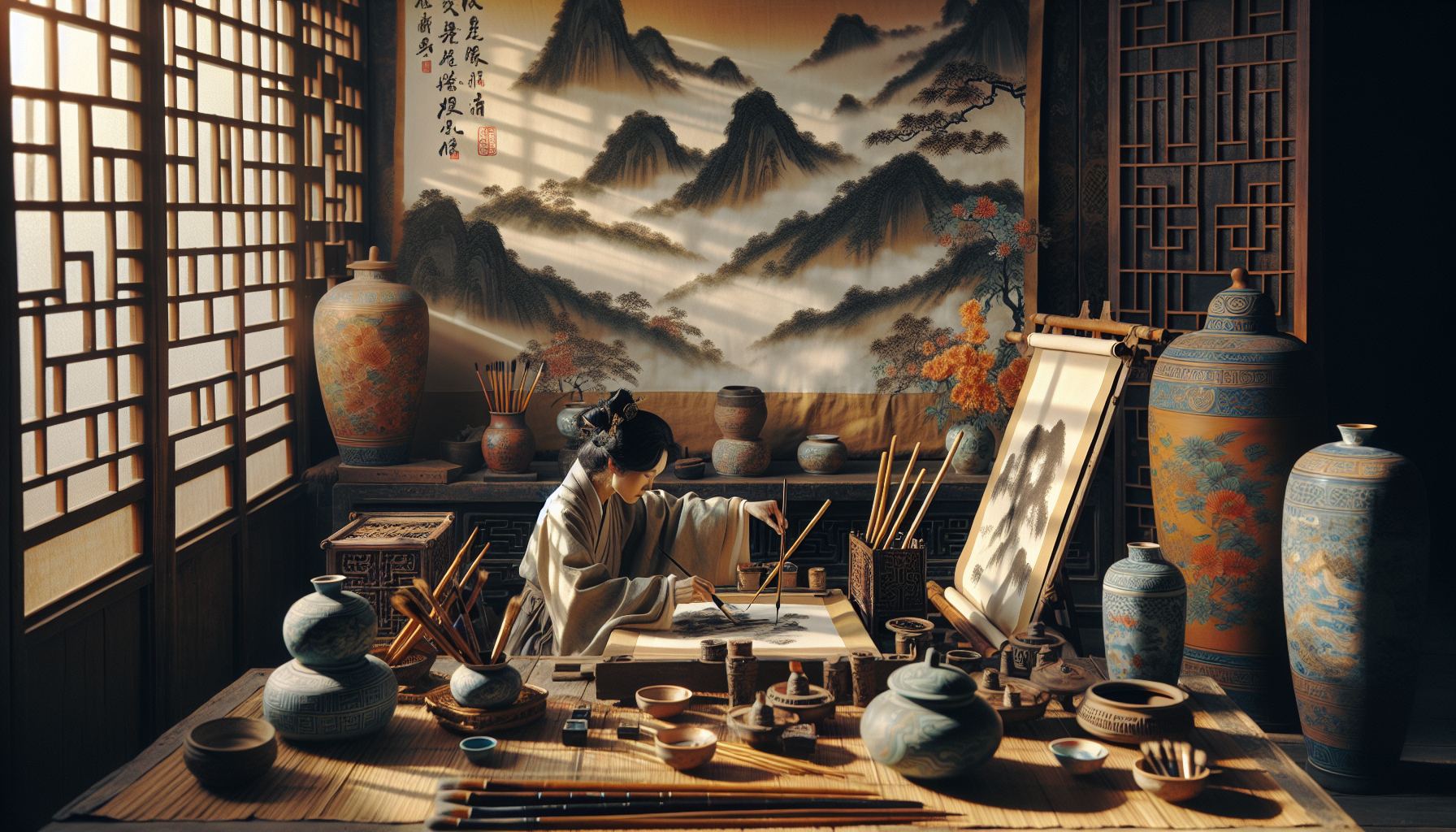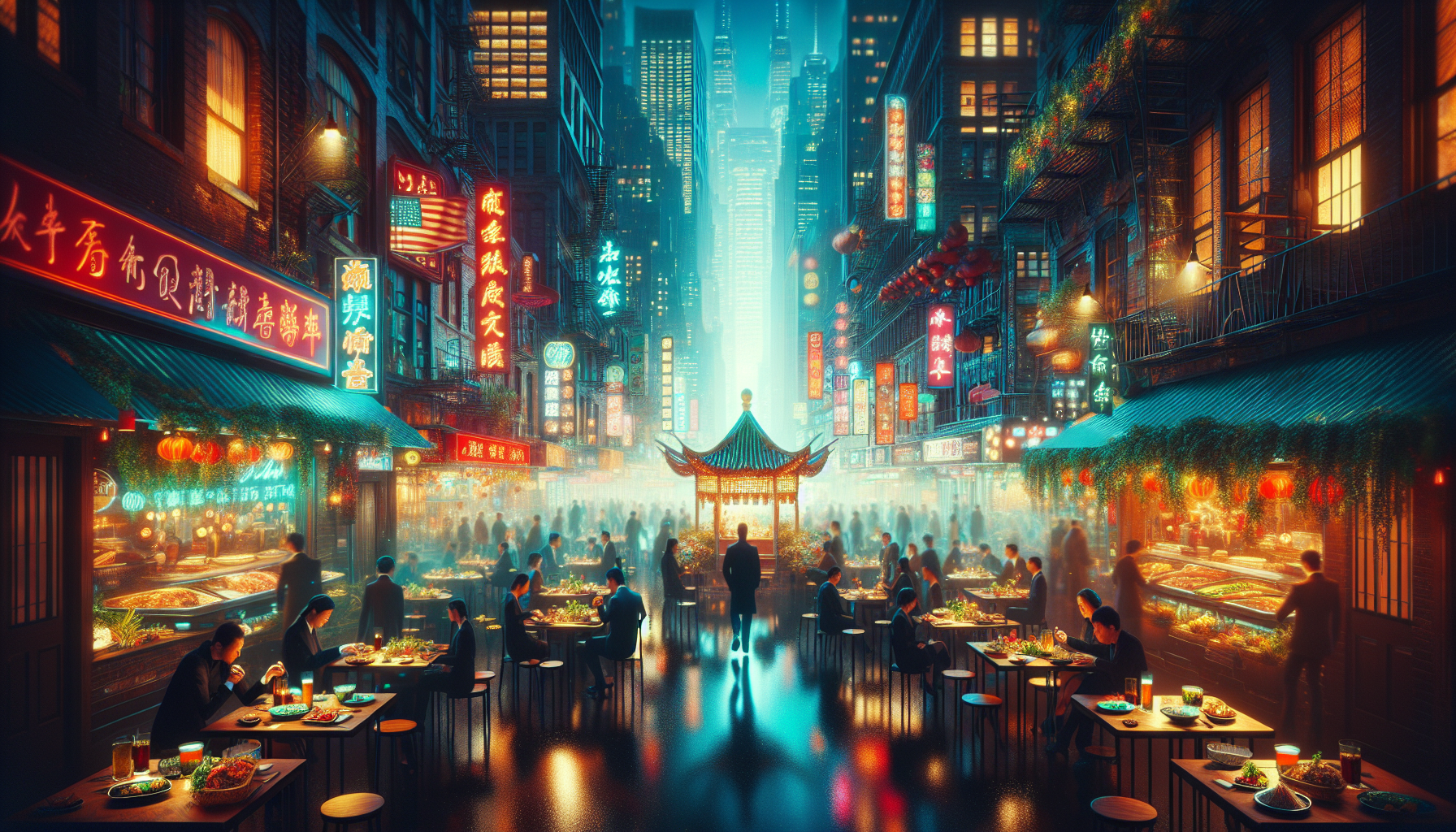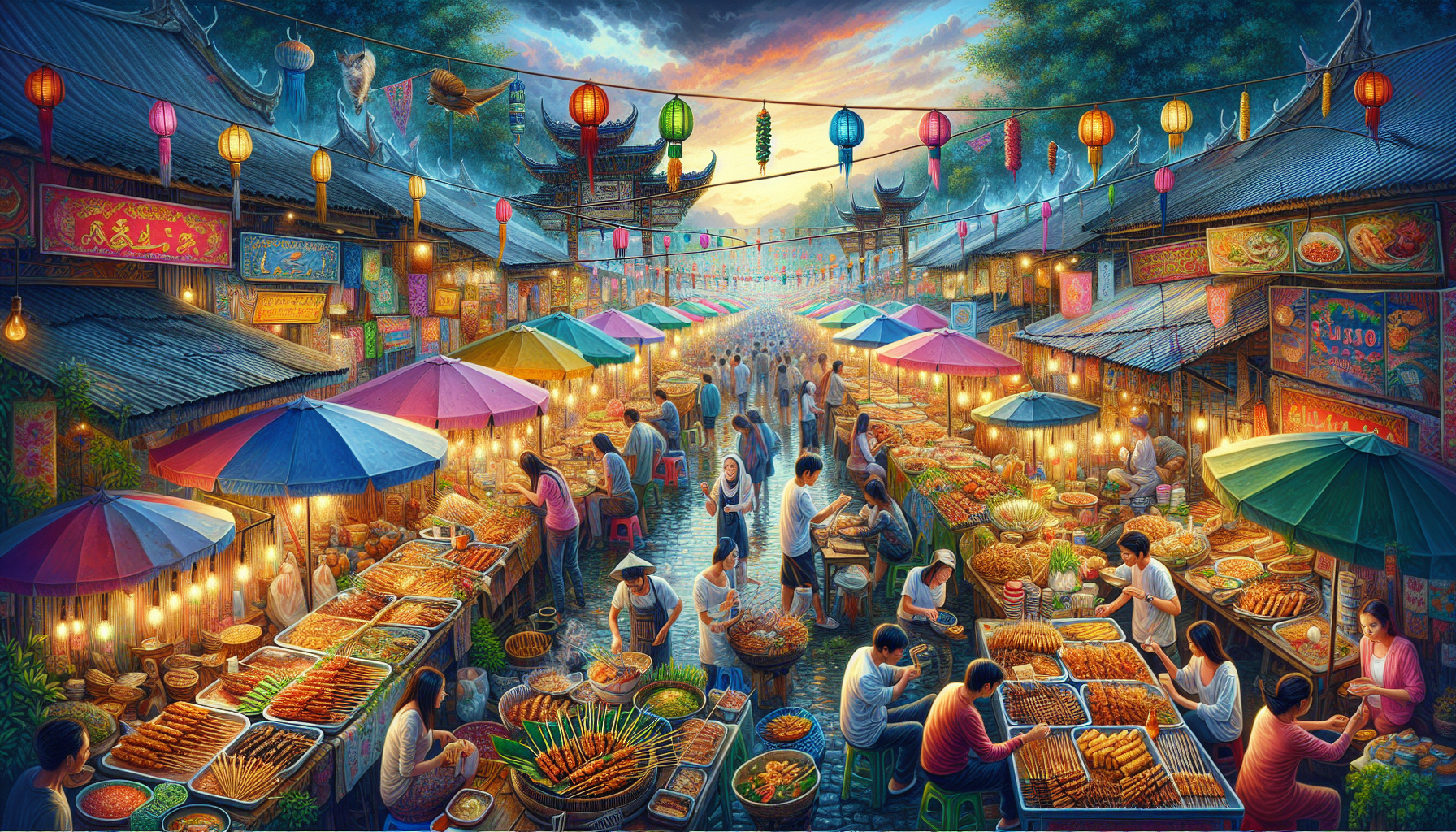Advertisements
Discover fascinating traditional Chinese art and delve into the rich history behind ancient paintings and ceramics from the Eastern culture. With an artistic tradition that dates back thousands of years, China has a unique artistic legacy full of meaning. Its works reflect not only the refined aesthetics and technique, but also the philosophy, religion and values of one of the oldest civilizations in the world.
Chinese paintings, known for their delicacy and symbolism, depict natural landscapes, historical and mythological figures, as well as scenes from everyday life. Chinese ceramics are famous for their quality and diversity of styles, from white and blue porcelain to colorful vases and sculptures. Each piece carries centuries of tradition and technique refined over time, resulting in true masterpieces that delight and inspire to this day.
When exploring traditional Chinese art, we are transported to a universe of symbolism, harmony and beauty, where every brushstroke and detail has a profound meaning. In this article, we will delve deeper into this fascinating universe, uncovering the secrets behind the paintings and ceramics that have enchanted and inspired generations, revealing the cultural and artistic richness of ancient China.
Advertisements
Traditional Chinese Art
Traditional Chinese art is rich in history and meaning, reflecting the culture and values of the Chinese people over the centuries. Ancient paintings and ceramics are true works of art that enchant and fascinate those who contemplate them.
Chinese Paintings
Chinese paintings are known for their delicacy and attention to detail. Often done on rice paper with watercolor paint, these works depict natural landscapes, human figures, flowers and birds. A striking feature of Chinese paintings is the presence of calligraphy, which often accompanies the image and brings additional meaning to the work.
- Calligraphy: The presence of calligraphy in Chinese paintings not only adds an aesthetic element, but also carries deep meanings. The choice of characters and the way they are written can convey philosophical, poetic or spiritual messages.
- Natural landscapes: Natural landscapes are a recurring theme in Chinese paintings, reflecting the Chinese's reverence for nature and their pursuit of harmony with their surroundings.
- Flowers and birds: Flowers and birds are often depicted in Chinese paintings as symbols of beauty, prosperity and good luck.
Chinese Ceramics
Chinese ceramics is another traditional art form that stands out for its beauty and sophistication. The Chinese have mastered the technique of pottery for thousands of years, producing unique and intricate pieces that are prized around the world.
- Porcelain: Chinese porcelain is famous for its delicacy and translucency. Made from special clay and subjected to high temperatures, Chinese porcelain is known for its resistance and characteristic shine.
- Glaze: Many Chinese ceramic pieces are decorated with colorful glazes, which give the works a bright, vibrant finish.
- Relief: Relief is a common technique in Chinese ceramics, in which patterns and figures are carved into the surface of the piece, creating a three-dimensional and textured effect.
Traditional Chinese art is a true jewel of Eastern culture that continues to delight and inspire people around the world. Its ancient paintings and ceramics are testaments to the rich history and tradition of the Chinese people, revealing a universe of beauty and meaning that transcends time.
Advertisements

Traditional Chinese art is a profound reflection of the history, philosophy and cultural values of the Chinese people. Over the centuries, it has served not only as a means of aesthetic expression, but also as a way to preserve and transmit the wisdom accumulated over generations. Chinese paintings, ceramics, calligraphy and sculptures are not just visual representations, but messages loaded with symbolism and deep meanings, often related to nature, the cosmos, morality and spiritual beliefs.
One of the most fascinating aspects of traditional Chinese art is its connection to philosophy and spirituality. Landscape paintings, for example, do not just depict the beauty of nature, but also convey the Taoist concept of harmony between man and the environment, as well as the Confucian idea of morality and balance. Works of art often carry a deeper purpose, inviting the viewer to reflect on life, existence and the place of human beings in the universe.
Chinese ceramics, especially those from the Tang, Song and Ming dynasties, are another example of how art reflects the country’s cultural richness. Each piece, from the simplest to the most sophisticated, possesses a unique beauty, combining functionality and aesthetics. In addition, the technical skill and attention to detail in Chinese ceramics are admired around the world, and many of these objects have become icons of Chinese material culture.
This vast artistic legacy not only connects the past to the present, but also crosses cultural boundaries. Contemporary artists continue to draw inspiration from the forms and symbols of traditional Chinese art, incorporating them into their own creations, thus perpetuating a tradition that stands the test of time. Chinese art continues to bridge generations and cultures, standing out as one of the richest and most influential artistic expressions in the world.
Conclusion
In conclusion, traditional Chinese art is a cultural treasure that allows us to delve into the history and values of the Chinese people over the centuries. Ancient paintings and ceramics reflect the delicacy, sophistication and spirituality of this rich Eastern culture. The presence of calligraphy in Chinese paintings adds layers of meaning, conveying philosophical and poetic messages. The natural landscapes, flowers and birds depicted in the works reveal the Chinese reverence for nature and their search for harmony.
On the other hand, Chinese ceramics, especially porcelain, are known for their delicacy and translucency, standing out for their refined technique and colorful glazes that give the pieces shine and vibrancy. Relief, a common technique in Chinese ceramics, creates a three-dimensional and textured effect, adding complexity and beauty to the works.
In short, traditional Chinese art is a true expression of the identity and history of the Chinese people, and continues to delight and inspire people around the world. Its ancient paintings and ceramics are testaments to the skill and creativity of these people, revealing a universe of beauty and meaning that transcends time.




